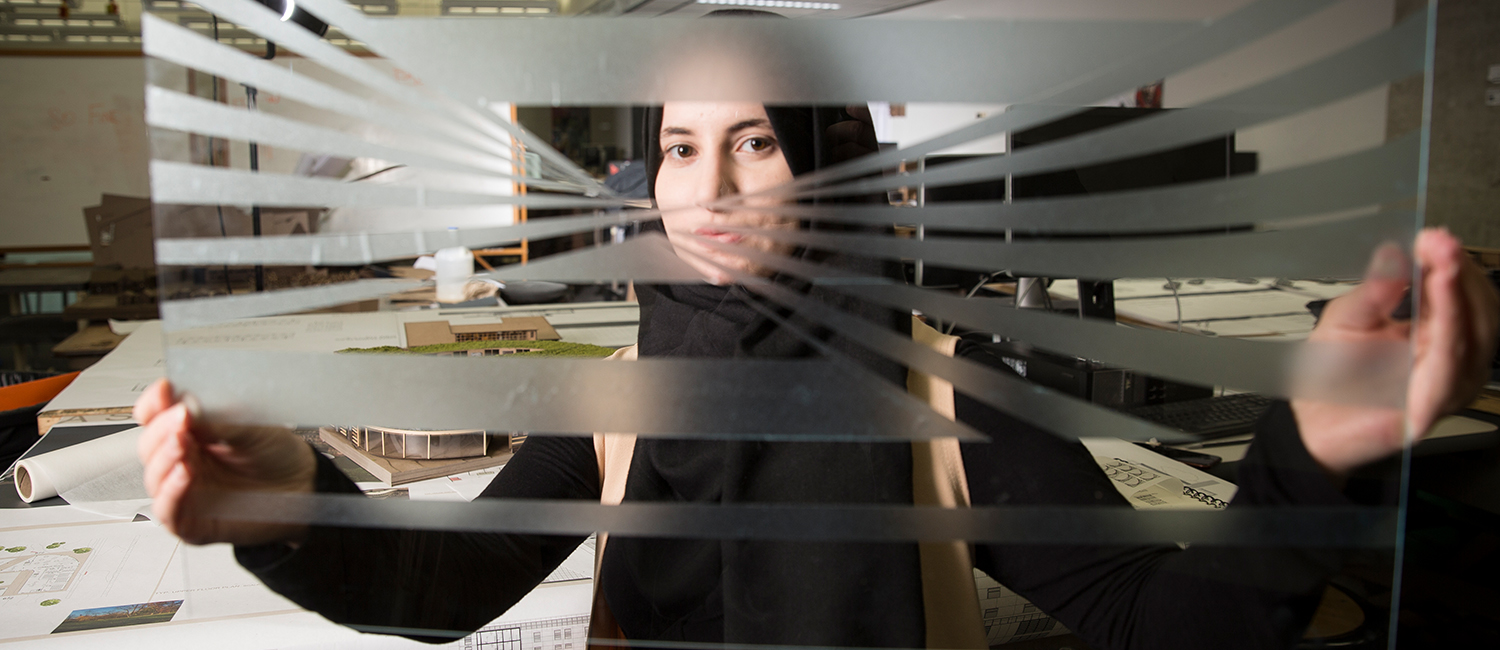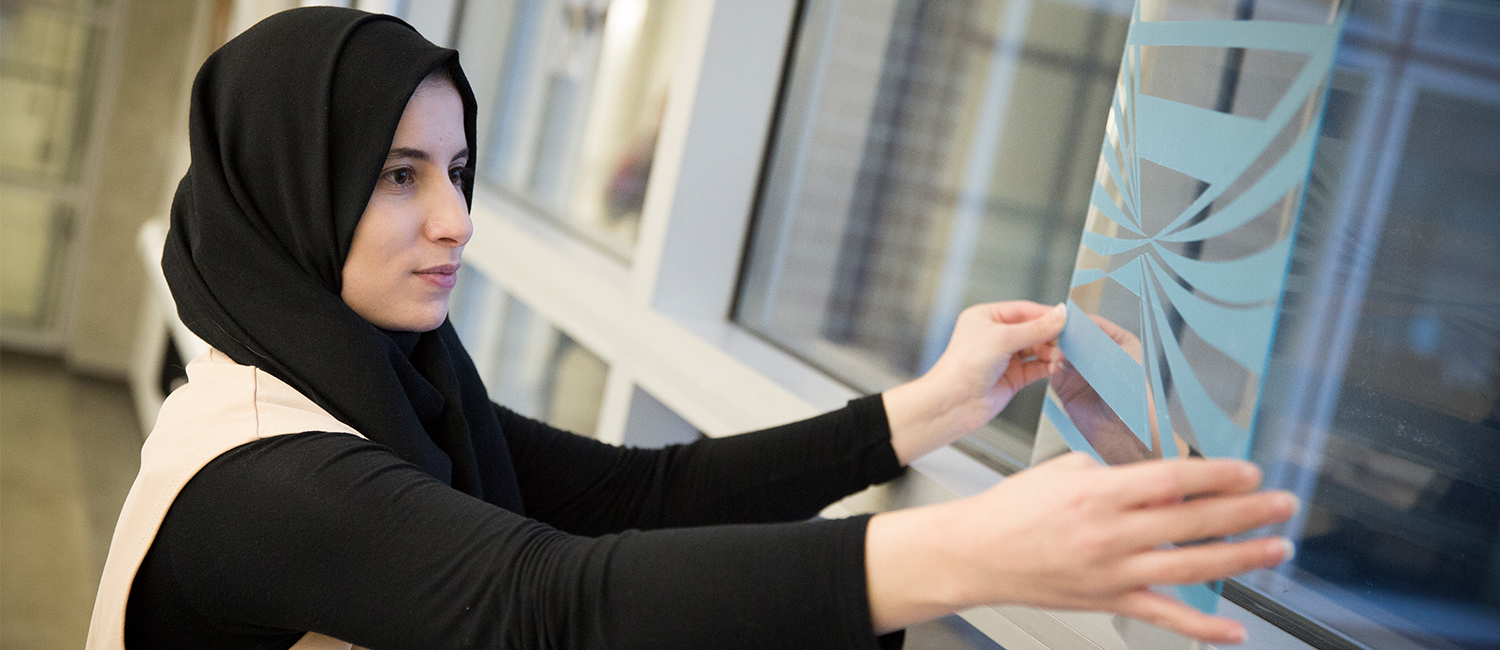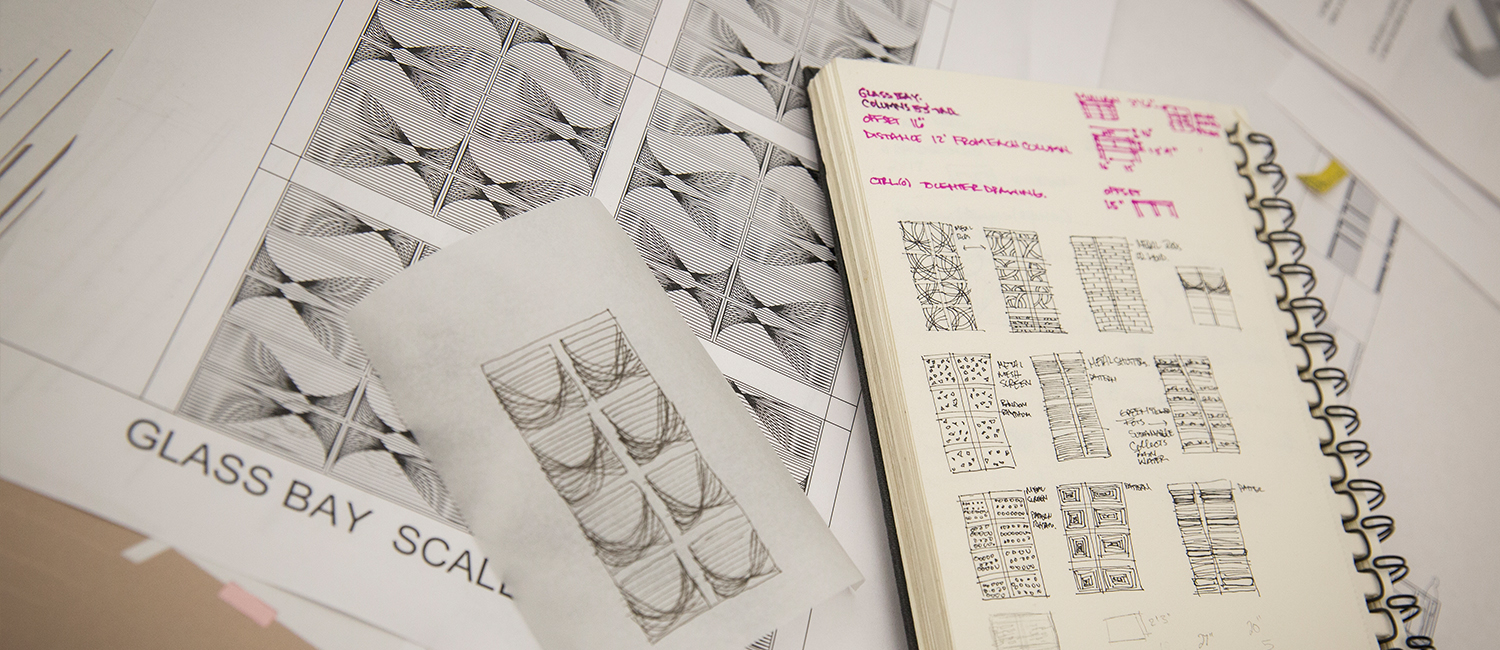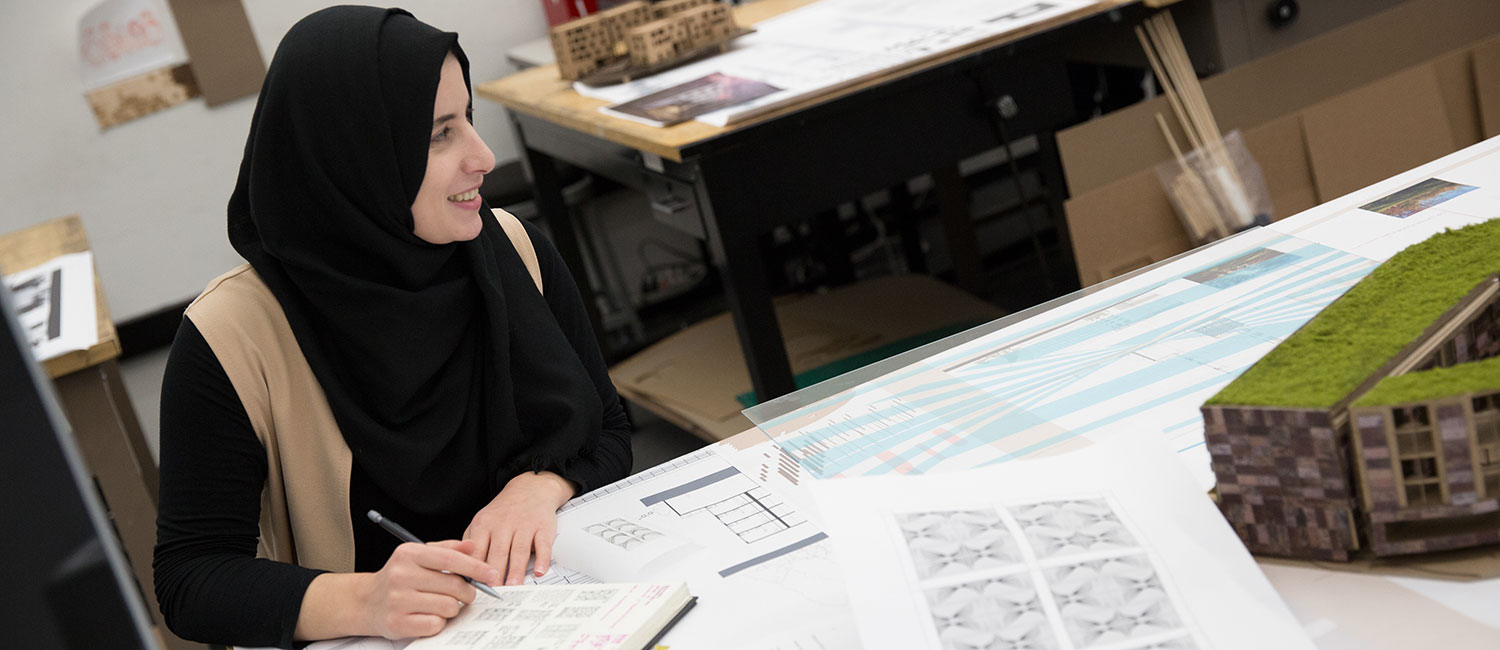
A flying buttress
You could say Asal Issa’s design is for the birds. Because it might save plenty of them.
The junior architecture major created the pattern pictured above to deter birds from flying into windows, and it’s being tested on glass facades at the School of Architecture and Urban Planning.
Between 365 million and 988 million birds die annually from building collisions in the United States, according to a study released in 2014, and dozens of those happen at the SARUP building. The window-pattern test, scheduled for a spring 2017 installation, is part of a multiyear interdisciplinary project to study and reduce such collisions.
Issa’s design of swooping and contrasting lines was chosen from 120 student entries, and it’s applied to windows using a special film that can last for years. She wanted to create a sense of motion on the glass while obscuring some of the translucent surface. “For the birds to be deceived a little,” Issa says, “so they wouldn’t actually hit something. I tried to think how the birds view things.”
She had to do it while allowing windows to still be windows, letting in natural light and letting building occupants see outside. She sought inspiration from her favorite architects, including Santiago Calatrava, designer of the Milwaukee Art Museum’s Quadracci Pavilion.
“Asal is incredibly rigorous, very precise. Sort of the ideal design student,” says Filip Tejchman. He’s an assistant architecture professor who leads the project with associate architecture professor Mike Utzinger and associate geography professor Glen Fredlund.
Issa grew up in Chicago, where she became enamored with the architecture of high-rise buildings.
“I’ve wanted to be an architect since the seventh grade,” she says, and she’s found UWM’s program to be the perfect match for her goals. “I feel like it suits me in a design sense, because I’m able to experiment more with design. I love the feedback from the faculty, and it makes me want to learn even more.”
The bird-collision study is supported by a Support for Undergraduate Research Fellows grant. In addition to SARUP’s efforts, it involves students and faculty from UWM’s Department of Geography and personnel from the American Bird Conservancy.


